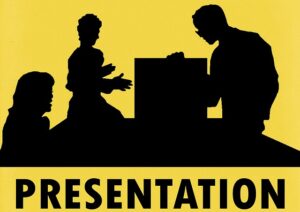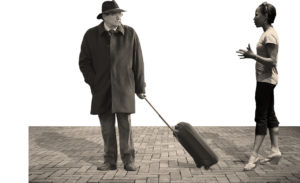If you want to write a thriller that engages your readers, you need to focus on the different story structures. This includes creating compelling characters, setting up believable conflict, and making sure the story moves quickly. This blog post will discuss these elements in detail and give you tips on creating an exciting thriller story.
The basic story elements are setting, characters, conflict, plot, and resolution. However, keep in mind that there is no one “correct” way to structure a story. Many stories will have more than five elements, and some might have fewer. The important thing is that the story feels coherent and makes sense to the reader.
Introduce your setting and main characters
The exposition provides background information to the reader. Start your story by introducing the setting in the ordinary world. The setting in a thriller should be vividly described and add to the story’s overall suspenseful atmosphere. Where is your story taking place, and when? Tell your reader how it looks. What kind of weather do you have?
Here is an example of a setting:
– Dark billowing clouds followed a big crowd of angry protesters moving through downtown Portland in the rain. The first half of 2020 had been rife with protest marches against the unjust treatment of minorities, and residents wished there would be an end to it.
Suddenly, the rain turned into a heavy downpour, drenching the demonstrators and making it difficult to continue.
As the crowd dispersed, the sense of anger and frustration remained. They had set the scene for violence, but thankfully it had not boiled over. However, the dark mood that the rain had created continued to hang over the city like a storm cloud.
Character development – the protagonist:
After the setting, you need to introduce your protagonist, a believable and relatable character that your readers can connect with.
Let’s look at an example:
– Lina, an attractive microbiology technician in her mid-thirties, was passionate about her work in the hospital lab. She had recently made a discovery that she planned to present at a board meeting the following day. Her work was her passion, and she secretly allowed herself to dream of getting the NOBEL price one day.
She looked out at dark, billowing clouds and decided to make it a day. She should go home and get a good night’s sleep before her presentation.
She took a shortcut along a dimly lit alley, hoping to make it home before the rain became heavier. As she hurried along, she could hear distant sounds of angry shouting that seemed to get louder with every step she took toward them.
Suddenly, the silence around her in the alley made her feel vulnerable. She stepped up to the entrance of an old building, but the musty scents from inside made her reconsider. Suddenly, three men noisily entered the alley ahead of her. When she recognized one of them as Duncan, a computer expert at a nearby R&D company who had spent jail time for some computer scam, she quickly slipped under a loading dock.
The men had seen her dive under the dock and cheered. They ran up to her, laughing, pulling her out, and insisting she take a slug of their beer. Lina screamed, staring back at them like a cornered animal. Duncan pushed her away. “I know you,” he said with a hostile snarl, “you’re the broad working with that asshole who set me up, sending me to jail.”
Here we have a bright, successful young protagonist following her intuition to keep safe. She is primarily a friendly person, but her one weakness is that she never feels completely safe with people she doesn’t know. Something might have happened in her life that led her to become guarded and protective, making it harder for her to make close friends.
Character development – the antagonist:
At this point, you should introduce someone who desperately wants to stop Lina in any way possible. It’s personal, and you should reveal why.
It could turn out to be something like this:
– Bill, another microbiology technician, had worked in the lab for years and was very good at his job. But he was also a very jealous person. He couldn’t stand that his young co-worker, Lina, was so successful. She was always getting recognition from the professors, and always seemed to be ahead of him in her work.
Consumed by resentment, he intended to find ways to plot against her. His goal was to sabotage her work to the point where she’d make mistakes and be taken off the project. He didn’t mean to hurt her, oh, no, but she needed to be put in place for the good of science.
Set up the conflict or problem

The second act in the basic structure is when everything starts to go wrong for the protagonist. One way to create strong narrative structures for your story is to use a clear inciting incident to start the story off on the right foot. This helps build rising tension throughout the tale and delivers satisfying resolutions to all of the conflicts and questions raised along the way.
For example, with all that resentment lurking in the protagonist’s world, it was only a matter of time before something bad would happen. And when it did, it was a devastating shock to the protagonist.
This incident is called the Inciting Incidence. You should set it up early in the story to help hook your readers and keep them engaged.
Ensure that the conflict is believable and relatable and builds throughout the story.
The inciting incidence:
– On the day of her big presentation, Lina trembled with nervous excitement. She had devoted three years of her life to microbiology research and felt optimistic that her discovery would make an essential change in her field.
As she stood in front of the whole scientific team, eager eyes fixed upon her, she prepared to share what she had found. Just as she was about to begin, she caught a glimpse of Bill, one of the scientists in her lab who had long been jealous of her success. Although he said nothing at first, his malicious gaze spoke volumes, and Lina could feel his resentment burning into her like fire.
And just like that, Lina’s moment was ruined. As she started her PowerPoint presentation, she froze at the sight of the picture on the screen. What she planned to say wouldn’t make any sense to the people looking at it.
Her excitement turned to shame as Bill watched with a triumphant smirk on his face, knowing that he had successfully sabotaged what should have been an important moment for Lina and their entire team.
Show the character’s attempt to resolve the conflict

The second plot point in a basic story structure is the “dark night of the soul” – it’s that moment when the protagonist faces their lowest point and wonders whether they’ll be able to overcome the adversity they’re facing.
Show how the character’s choice takes a turn for the worse and how the consequences of their actions force them to face the consequences.
Let’s see what our protagonist decides to do:
– At first, Lina wasn’t sure what to do. Her study was in scrambles, and she was now in danger of losing her job. But she refused to let this setback stop her from achieving her goals.
She was still steaming about Bill’s look at the board meeting. So full of spite. Just like that R&D guy in the alley. Lina remembered him saying something about her working with someone who’d set him up for something that sent him to jail. Would Bill have done such a thing?
Convinced that Bill had tampered with her report, she confronted her boss and told him what she suspected; that her research had been pampered with out of spite by someone who thought he was more worthy of success than she was.
After giving it some thought, her professor told her to tell her colleague about her suspicions and to work it out with him. He gave her twenty-four hours to get back to him about the outcome.
Lina realized she’d made a terrible mistake. She’d insinuated that someone else was to be blamed, and now it was up to her to set things right. For that, she’d need to have a serious conversation with Bill. She had no clue how to do that, but she had to find a way.
Create suspense and tension by raising the stakes
The protagonist has reached a crisis. We are now at the climax of the story, where the protagonist goes into battle with the antagonist. The reader is left wondering how it will all end. Here is when all your hard work pays off, and your readers are glued to the page, eager to find out what happens next.
The climax
Plot points are pivotal moments that move the story along. These can be things like someone finding an important clue or coming to a realization about something they thought they knew. Plot points often lead directly into turning points, which are the moments when the story takes a major turn.
Here is an example of a plot point:
– Lina went to see Duncan at the D&C company, asking him for a minute of his time. She told him she needed someone with his qualifications to help her restore a study she was working on and that she would pay him for his time.
The next morning, Lina and Bill stood facing each other in the lab, accusations flying between them. “You tampered with my study!” Lina cried, her eyes flashing with anger. “Why? Are you jealous of my work?” Bill just laughed and shook his head. “What are you talking about? I would never stoop to such childish tricks.”
Lina refused to back down, and the two scientists argued until they were both red in the face. Finally, she told Bill that she had secured a promise from an R&D technician that he would testify to having made some changes for Bill in some papers foreign to him. “Because the price was right.”
Resolve the conflict in an exciting way

The third act, the denouement, is the final resolution of a story, especially one full of suspense and surprises. It’s when the protagonist starts to put things right and eventually defeats the antagonist. The antagonist gives up, or there is a twist that changes everything. Whatever happens, make sure it is exciting and satisfying for your readers.
A satisfying conclusion
The denouement is the final resolution of a story, especially one full of suspense and surprises. It is often used in thrillers and mysteries, and it can be a satisfying moment for readers when all the pieces finally come together. Some well-known examples of denouements include Luke Skywalker learning that Darth Vader is his father in Star Wars, or Rose letting go of Jack at the end of Titanic.
– Nina was amazed at how light she felt at the end of the battle. Amazed with herself for having taken such strong actions to expose the truth. She felt proud of herself, like a new person, a more confident person.
Conclusion
Now that you know the basics of story structure, you can start planning your next thriller. Remember to keep your characters interesting, your plot full of twists and turns, and your ending thrilling. With some practice, you’ll be writing page-turners in no time.
If you have any tips for creating a successful story structure, please share them below. We will keep them to share with other thriller authors with your permission only.
If you’re working on your first novel and are looking for more help with your writing, please check out our other articles at https://ullahakanson.com/blogs/
Best of luck with your writing!
Ulla

